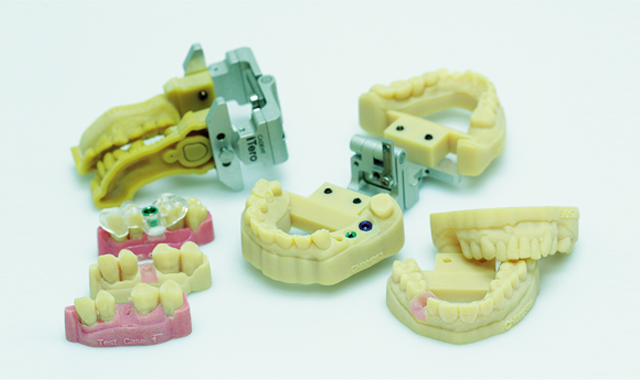The state of 3D printing
Mark Ferguson analyzes the state of 3D printing, looking both at what it can do now and what the future might hold for it.

Digital technology is creating workflows never seen before in the dental industry. The pathways of sharing information and collaborating on cases are becoming more abundant and easier to use. As members of the restorative team strive for more accuracy in all aspects of the process, from implant placement, impression taking and prosthesis creation, one tool that is sure to get used more often is 3D printing. There are very few things that have advanced as quickly as 3D printing over the past few years. This advancement has come from the convergence of hardware and material development happening simultaneously. Along with this external development, the people using the 3D printers have also learned to optimize both the files they are printing and the machines they are using.
The amazing thing is that this could just be the tip of the iceberg as it relates to 3D printing. As material manufacturers continue to strive for government approval for intraoral use, the printer and software companies, and the forward-thinking people operating the machines, continue to gain knowledge of the possibilities offered by additive manufacturing. This technology will grow exponentially.
Related Article: 10 things you need to know about 3D printing
A large barrier to 3D printing has typically been the cost of entry. Most labs are not willing or able to spend over a hundred thousand dollars to print models or restorations for lost wax technique processes. This gives the impression to the labs that they are paying high prices for what is typically low cost parts. In the laboratory business mind, this is very counterintuitive: Why do we need to spend significant amounts of money to do something we pay very little to do now?
But the missing aspect of this line of thinking is the potential for labor saving by digitally designing a larger number of restorations. As technicians, we have been able to see lack of crisp detail in these prints, and frankly haven’t been able to trust the accuracy. This in part comes from a lack of understanding of the difference between accuracy and resolution. The accuracy of these printed parts is now beyond what we could have imagined a few years ago. However, we still see the resolution can certainly be improved.
The difference between the two factors can easily be explained using a scale as a reference point. The resolution in this case would be the number of decimal places the scale can measure to. The accuracy, on the other hand, is how the weight of what is being measured is portrayed in the reading of the scale. For example, a 10-and-one-third-pound weight put on the scale giving a reading of 10.33 pounds doesn’t have the resolution of 10.33333333333 pounds, but in the end is accurate. This is more accurate than a scale that reads 10.66666666666 pounds. This contrast is evident in models. With expansion and contraction of impression material and stone used to pour the models, a technician can see great detail, but the model is still not exact and has a degree of inaccuracy. On the other hand, the printed models from intraoral scanners are more accurate dimensionally, but don’t show the same amount of details.
Related Article: How 3D printing streamlines your workflo
Next: The future of 3D printing ...
As the printer companies continue to improve, we will see layer thickness get smaller and smaller, and thus higher and higher resolution prints. This doesn’t necessarily mean that the cost of the machines is going to increase. There are several new companies in the 3D printing space. This includes companies that didn’t exist in dental previously and who are now making big names for themselves. They offer high quality printers for under $5,000. These companies were offering high-end consumer printers, thought to be expensive by the hobbyist, that through testing were found to be up to the quality standards we expect in dental at a fraction of the cost we currently expect. Looking at cost, where we once thought of these machines being in $100,000-150,000 range, we now have a price range of $5,000-150,000.
Of course, as we would expect, the more expensive machines offer significant advantages over the less expensive ones. One of these are the ability to print in different materials. This could be an added color selection, or hardness/elasticity variability. While this has limitations, we can see how our 3D printers will morph into uses similar to what has happened with our home 2D printers. We now rarely print anything outside the home, where once photo huts littered every parking lot around us.
Related Article: What the future holds for 3D printing
This same thing will happen with 3D printing. In our lifetime, we could see an end of toy stores. Instead, we will purchase files off the internet to customize with colors and print at home. The advancement in machines and materials running parallel could enable this sooner than we think. The higher end of industries leads this development, because they are willing to spend the most money. F1 racing has been using 3D printing for a couple years. Boeing has more than 20,000 non-metallic additive manufactured parts on airplanes they delivered to customers.
Dental doesn’t have the capital of these other industries, and also has the hurdle of government regulations. But once the materials we would like to use, or ones that haven’t been released yet, have registered with the proper government agencies around the world, the doors will open even wider with options for these machines. For some it may mean the printing of custom temporaries, dentures, bite splints or surgical guides. For others, maybe printing porcelain will become the norm. Regardless of how we use the technology, the advantages of additive manufacturing will continue to be exploited for the benefit of our patients.